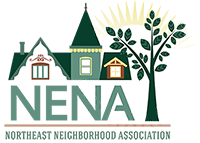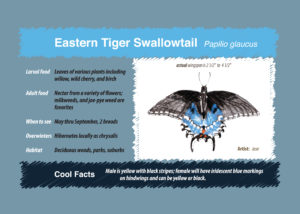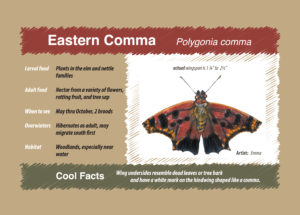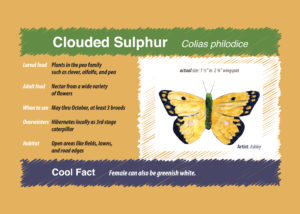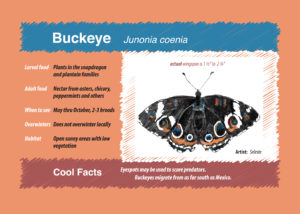NENA Butterfly Garden
The NENA Butterfly Garden is located at the corner of Ann Street and Douglas Avenue in the northeast neighborhood. Formally a vacant lot, volunteers and local residents worked with the City of Elgin to create a natural, tranquil, and butterfly friendly space for the entire neighborhood to enjoy. The project was built in 2008, and funded through a Neighborhood Improvement Grant and through generous donations from private individuals, local businesses and service organizations.
Butterflies and moths (both belonging to the Lepidoptera family) are among the pickiest eaters on our planet. The monarch butterfly will lay her eggs only in milkweed plants (Asclepias spp). Which is why our garden is stocked with a healthy patch of common milkweed, Asclepias syriaca, as well as Asclepias tuberosa (pretty, orange-flowered butterfly weed). The monarch caterpillars feed only on Asclepias as they fatten from 3mm to more than 10 cm in size. The fragrant blooms of Asclepias provide nectar to adult monarchs as well as many other species of butterflies. Other lucky larvae can feast on parsley, dill, and broccoli at a patch dedicated just for them.
Providing larval plants for our local butterflies is a key component in a butterfly garden. Additionally, offering nectar sources for the entire season is crucial. In the garden, suitable nectar-producing flowers are blooming from the end of May through the beginning of October; these have been supplemented with butterfly-preferred annuals (zinnias, salvia, alyssum, e.g.). Providing native, non-hybridized plant species helps support butterflies success.
You can help, too, by planting milkweed for monarchs, dill for swallowtails, zinnias for all, or visit the butterfly garden to get ideas for your own garden!
The NENA Butterfly Garden was made possible by the City of Elgin’s donation of the land, funding from a Neighborhood Improvement Grant, the dedication of NENA’s butterfly committee, and the hard work of scores of volunteers who dug, planted, weeded, and watered the garden (and continue to do so).
The design of the western portion of the garden is based on Design Your Natural Midwest Garden, by Pat Hill. Laura Anderson designed the eastern portion of the garden. The garden serves as a focal point in the neighborhood where people, pollinators (the butterfly and bee variety) and native perennials meet.
Special recognition is due to McKinley Elementary students who have helped at the garden from its start. Each year, they have planted hundreds of butterfly-friendly annuals; they have raised almost 100 monarchs to release in the garden over the years. Future plans include adding educational components to the garden. This summer, sixteen neighborhood kids met for three weeks at the garden as junior lepidopterists. Each student created a scientific drawing of a butterfly native to our area and researched its habitat requirements. These drawings permanently installed in the Garden thanks to another Neighborhood Improvement Grant.
